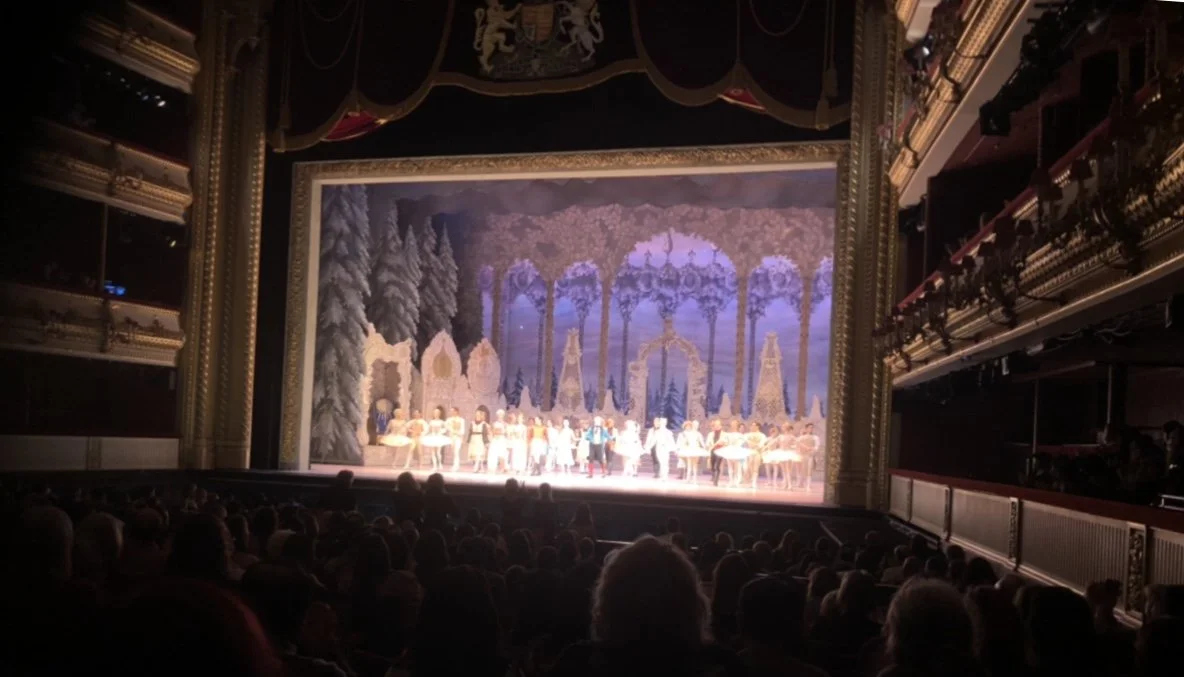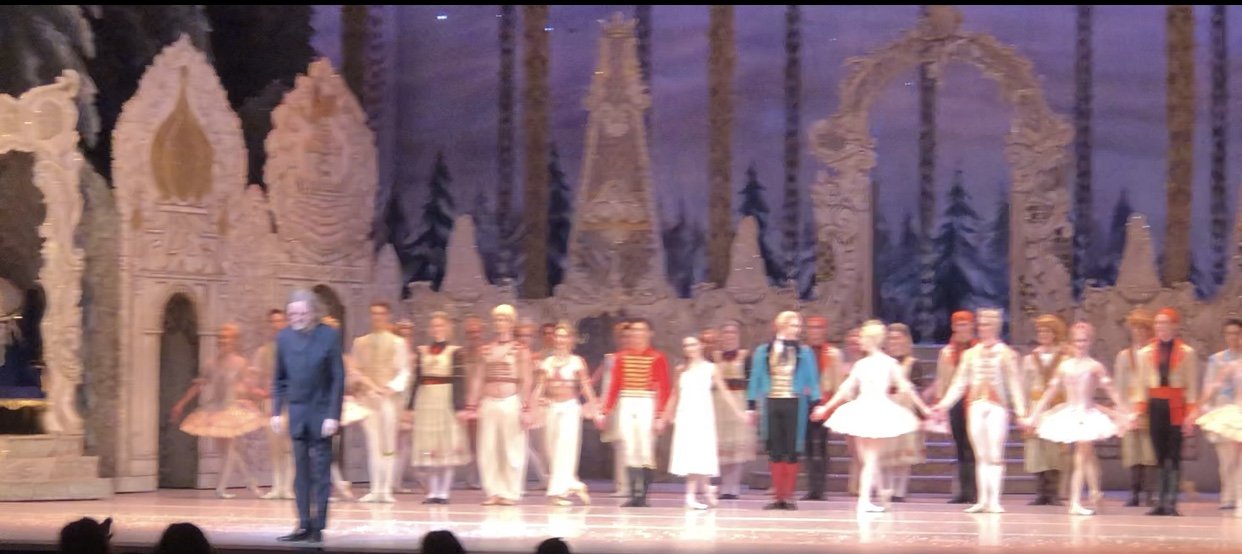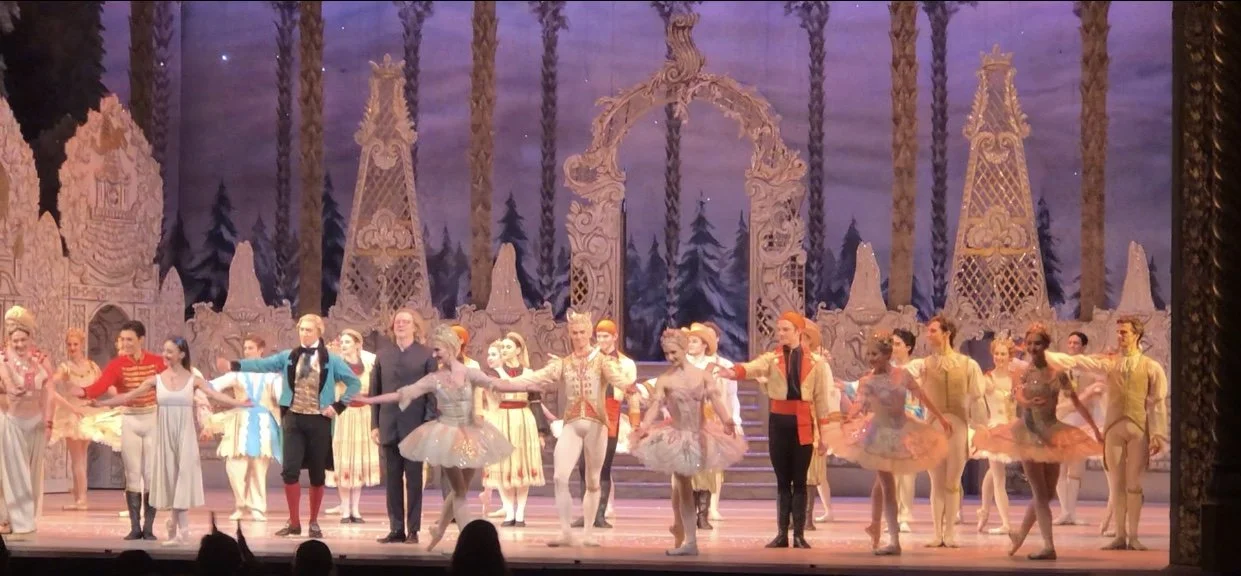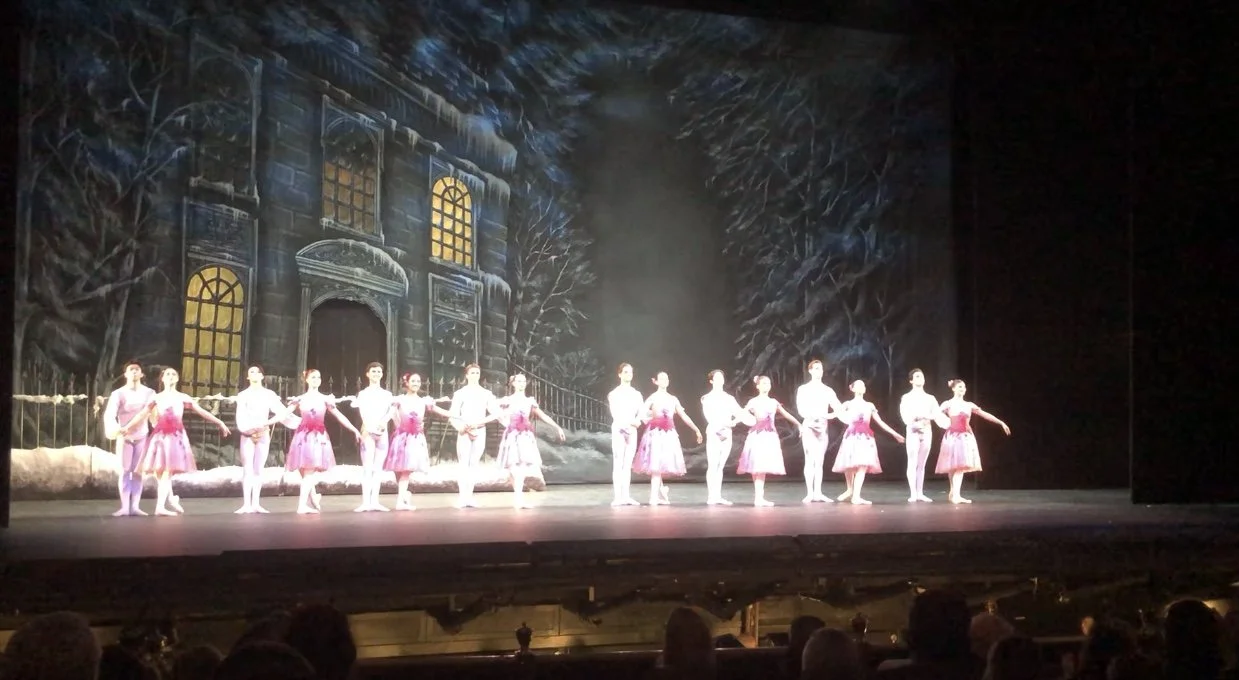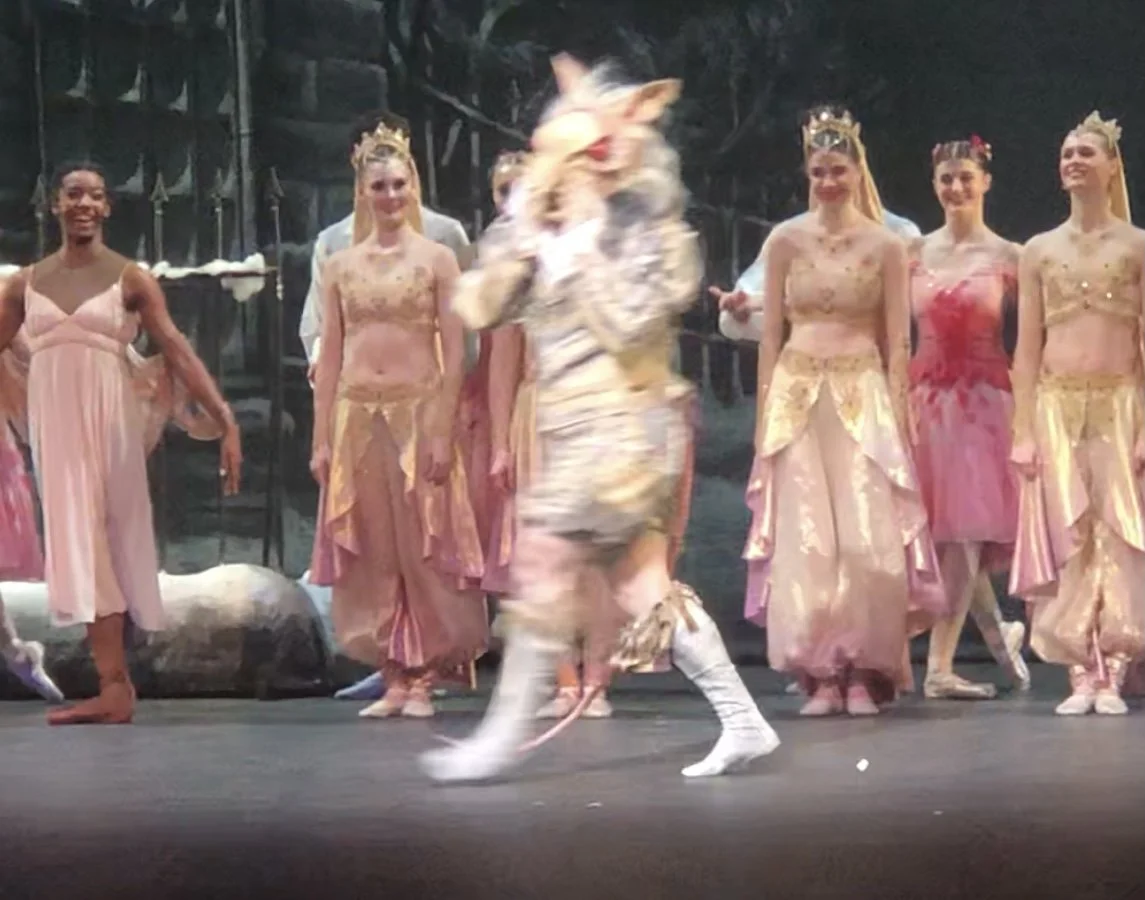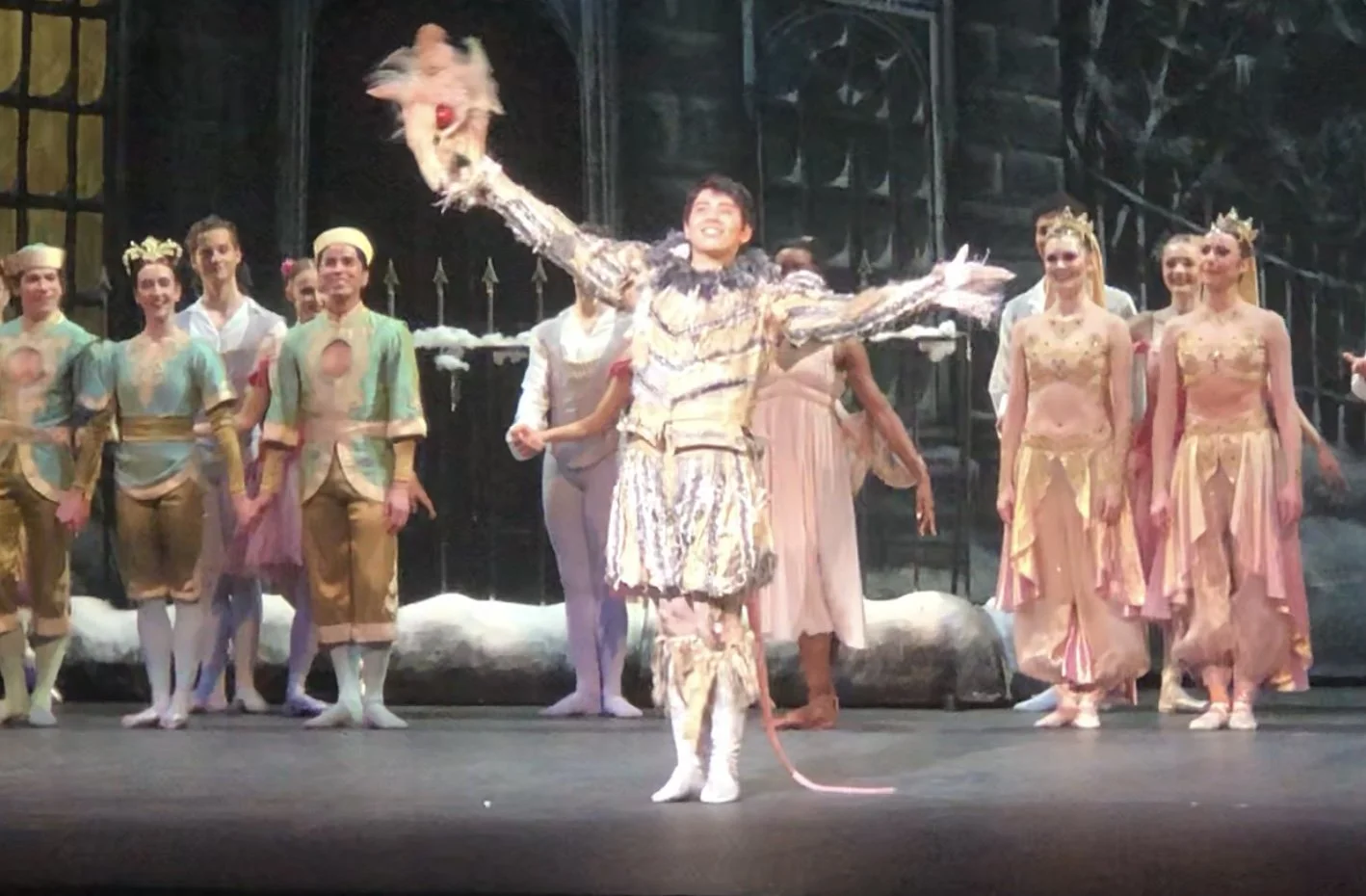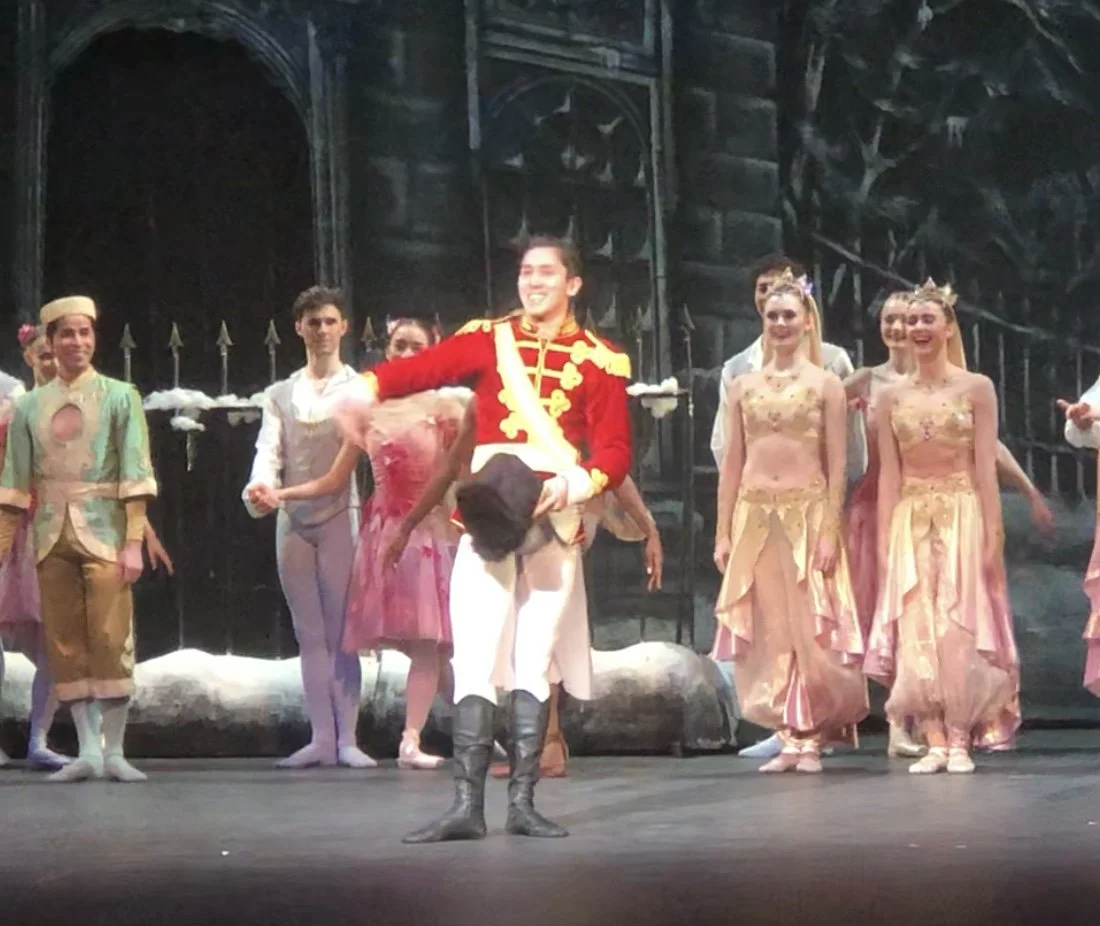London’s two big ballet companies molest “The Nutcracker”
London’s big ballet companies are not where anyone should hope to find an even tolerable Nutcracker. Neither the Royal Ballet’s production (Peter Wright, 1984, revised 1999 and subsequently, each time for the worse) nor English National Ballet’s (2010, Wayne Eagling, adapted from one he made earlier for Dutch National Ballet) is remotely as good as those danced by Ballet Arizona (Ib Andersen - Phoenix, Arizona), Ballet West (America’s oldest, created by Willam Christensen, Salt Lake City), Richmond Ballet (Stoner Winslett - Richmond, Virginia), American Ballet Theatre (Alexei Ratmansky) or New York City Ballet (George Balanchine, whose version - the most dramatically sublime, musically attentive, and compositionally fascinating - is also staged by seven or more other companies). And I’ve seen a number of other American Nutcrackers that, while flawed one way or another, are truer to The Nutcracker itself than these two pretentious, silly, London stagings.
A core element of the secret poignancy of The Nutcracker, as planned by Marius Petipa and Peter Tchaikovsky, is that Drosselmayer and the Sugarplum Fairy never meet. (Tchaikovsky may have seen himself as Drosselmayer. In the Sugarplum, he may been sublimating his beloved sister Sasha Davidova, who died before he began work on Act Two.) Both Peter Wrong and Wayne Eagling make the gross blunders of having Drosselmayer appear in Act Two, like a puppet-master doubling as the Sugarplum’s Maître D’. Mr Wrong (as Arlene Croce first named him in 1970) mauls most of the divertissements by having Clara (an adult, natch) and Drosselmayer’s Nutcracker nephew (another adult) join in, as if Spanish and Russian dancing were something that a pair of infantilised Nuremberg grownups can just pick up in a moment. The Wrong staging actually proves so inept that those two, Clara and the Nephew, then have to park themselves on the floor against the Covent Garden proscenium arch during the Sugarplum pas de deux: neither Sugarplum nor Drosselmayer can offer them a seat. Eagling is not to be outdone for ineptitude: he confuses the Coliseum audience by presenting two lookalike heroes in rapid alternation, one a Nutcracker, the other Drosselmayer‘s nephew. Back at Covent Garden, Wrong’s Drosselmayer has evolved, over the decades, into a cloak queen: this ultra-flamboyant conjuror rushes around the stage flourishing multiple yards of cloak as if hoping this might ingratiate him to us. And Wrong concludes that production by getting rid of Clara so that the ballet can end with Drosselmayer coddling his nephew in private with clammy embraces. (This struck several viewers as pederastic in the 1980s. It’s now so creepy I want Prime Suspect to step in.)
In Eagling’s version, the elder of two Claras dances the Sugarplum pas de deux with the Nephew, who kinda was the Nutcracker but kinda wasn’t. Eagling makes most men, not least Drosselmayer, lift women again and again and again - as if all women need to be held aloft as often as possible. So Clara gets repeatedly lifted by the Nutcracker, by the Nephew, and by Dross (who also gets to lift the Mirlitons soloist). When Clara gets to dance Ivanov’s Sugarplum pas de deux (with the Nephew), you may be sure Eagling has inflated it with more lifts than ever before.
Each version tells its terrible story terribly. Wright/Wrong’s has a bossy Dancing Mistress who keeps taking over the Act One party to no good effect, and adult-sized angels who seem to have been recently released from the taxidermists. Eagling’s has several adorable children about whom none of the stage adults seems seriously parental or remotely fond. Of the several dozen productions of Nutcracker I’ve seen (well over forty), only two play all Tchaikovsky’s music in the order he intended; you may be sure neither Wrong’s nor Eagling’s are among them. Still, Eagling’s is the first I can remember to jettison Tchaikovsky’s finale. Instead he reverts to music we’ve already heard in Act One, composed for the ending of the party. Hm? (Oh, and his is also the first “Nutcracker” I’ve seen that allots gargouillades to both the Mouse King and to the adult Clara as Sugar Plum. Is he trying to suggest they’re akin? Does the Mouse King have an inner Clara or does Clara have an inner mouse king?)
Though the British have a rich tradition of pantomime dames (men in comic drag) that’s percolated British ballet in several other productions (Frederick Ashton’s Cinderella and La Fille mal gardée above all), both of these Nutcracker productions omit this ballet’s one marvellous drag role : la Mère Gigogne or Mother Ginger. In dozens of productions across America, she’s greeted with happy applause - often even on her first entry. She’s a fertility figure; and she’s a load of fun. From her vast crinoline issues a whole brood of dancing polichinelle children. No, she’s not in good taste; Marius Petipa (who planned The Nutcracker with Tchaikovsky) didn’t want good taste here - he placed her number directly after the Mirlitons (Marzipan), the most refinedly good-taste item in the score. (Likewise it was Petipa who wanted the Russian dance to have hoops, as can be seen to this day in George Balanchine’s Candy Cane version of the Trepak. No, that’s not remotely in good taste either, thank heavens, but it’s step for step what Alexander Shiryaev - Ivanov was busy - choreographed here for the 1892 Nutcracker premiere. The Realm of Sweets is not some prim royal enclosure to exclude the vulgar; it’s a far larger and more generous view of society than that.) La Mère Gigogne did appear in the British Nutcracker I most regret having missed, the 1957 London Festival Ballet one with legendary Alexandre Benois designs (which lasted until 1975). In that, she was called Madame Regnier. Isn’t it weird that no British production has included her since then?
In Act Two, Eagling’s English National Ballet staging features a long series of trite Peter Farmer decors all atrociously lit by David Richardson as valleys of shadows); at Covent Garden, the icky Royal one’s Sweet Realm is designed by Julia Trevelyan Oman as a high-walled royal enclosure of crème brûlée. Curiously, Eagling’s feckless version proves more rewatchable over successive viewings than Wright’s dreary one. This isn’t because Eagling’s Clara and Nephew get to dance vast amounts before tackling the Ivanov pas de deux - though they certainly do, all of it forgettable. It’s because, now and then, Eagling’s largely derivative choreography releases elements of sheer zest in the English National dancers. By contrast, the Royal’s, with adult Clara and her adult boyfriend being wretchedly kiddie-cute throughout Act Two, is a cloying bore until the Sugarplum couple dance their big number. And the Royal production seems thoroughly over-rehearsed, the English National one somewhat under-rehearsed. In Nutcracker, the latter proves more spontaneous and better fun.
Whereas Wright excludes real children from his Royal Nutcracker, Eagling’s English National one includes at least a dozen: their performances are its freshest element of all. And the liveliest, clearest, most endearing, and most English characterisation (this Nutcracker is set in London, though don’t ask me where in this city) is invariably that of the young Freddie (Clara’s brother Fritz to you and me). He and little Clara are the last to join the cast in company bows, rightly applauded by their colleagues onstage as well as by the audience. Today’s little Freddie was Rudy Walding; as with all last week’s Freddies (Felix Fewell-Russell is first cast) I liked him so much I didn’t want him to grow up to become the bigger Freddie, who, poor mutt, has to do pirouettes à la grande seconde during the battle of mice and toy soldiers.
Among the English National adults, no interpretation is more lovingly detailed than the Grandfather, as played by Michael Coleman: affectionate, naughty, bespectacled, endearing. He upstages nobody; his emphasis is light; his manners to his colleagues are exemplary (unless perhaps you’re troubled by the sequence when he and the Grandmother nod off for forty winks on the party’s sidelines); he understates everything. Coleman is now over eighty; he was dancing lead roles at Covent Garden (the Shaw role in Symphonic Variations, Mercutio) in the first performances of ballet I saw there in 1974, and had been doing so beside Margot Fonteyn, Rudolf Nureyev, and other luminaries in the 1960s. In 1968, he created a role in Nureyev’s Freudian Nutcracker at Covent Garden; in 1984, he was the original Drosselmayer of Wright’s production. As the Grandfather of Eagling’s version, when the Grandparents and Parents dance the Grossvater number centre stage, it’s delicious to see how softly Coleman accentuates the footwork, and to observe the sweet pride this grandparent still takes in making a dance matter. When his grandson Freddie/Fritz joins them in the repeat, it’s perfect: you know at once where Fritz/Freddie gets all that twinkle from.
If British and European Nutcrackers are all you know, then the Christmas tree designed for the Royal version by Julia Trevelyan Oman is likely to wow you. To the music designated for its magical ascent by Tchaikovsky, it does indeed rise, rise, grow, and rise till it reaches the top of the stage. But I have to say that then you’ve lived with a few of the better American Nutcrackers, Oman’s tree is both over-the-top and underwhelming. For one thing, its ascent is complicated by the floor in front of it having to part and vanish: for another, it’s not only over-decorated but eventually contains four adult dolls at its base. This muddles the whole point of Petipa’s transformation: he wanted the tree to become a colossal version of its self, not some lah-di-dah fancification with adult knobs on. The Ballet West tree is far simpler and yet more truly colossal: its growth feels like that of a volcano. As for Balanchine’s, one thrill is that, when it stops rising, its top is actually out of sight; another wonder is that the architecture and furniture around it return in equally gigantic form, arriving bang! on the music like masterstrokes of fate.
One reason it’s better to watch multiple Nutcrackers than many other ballets is that Tchaikovsky’s music is among his most multi-layered masterpieces; another is that it keeps on the move, Protean in its changes. Despite a muffed brass note or two, the English National Ballet Philharmonic, conducted by Daniel Parkinson today and by Alexander Ingram on opening night, played this music lovingly: solo woodwind phrases were piercingly beautiful. When staging The Nutcracker, a director can deviate from the plans of action that Marius Petipa wrote in 1891-1892 for Tchaikovsky and the Maryinsky, but Tchaikovsky’s score’s fabulously abundant texture and detail will remain - thank heaven.
Monday 20 December
@Alastair Macaulay, 2021.
1: Company bows in Julia Trevelyan Oman’s 1984 décor for the Realm of Crème Brûlée: Royal Ballet at Covent Garden, December 4, 2021.
2: Conductor Koen Kessels joins the Royal Ballet cast, led by Lauren Cuthbertson and William Bracewell, December 4.
3: Royal Ballet company bow after “The Nutcracker”, December 4, 2021.
4: The corps de ballet of female and male Flowers taking applause, English National Ballet, London Coliseum, December 2021
.
5: The Mouse King joins the English National Ballet “Nutcracker” cast for onstage applause.
6: William Yamada after removing his Mouse King head.
7: The Nutcracker joins the “Nutcracker” cast for applause, English National Ballet
.
8: Erik Woolhouse after removing the Nutcracker‘s head from his costume.
10. Katja Khaniukova (Clara) and Altor Arrieta (Nephew).
